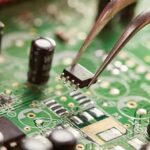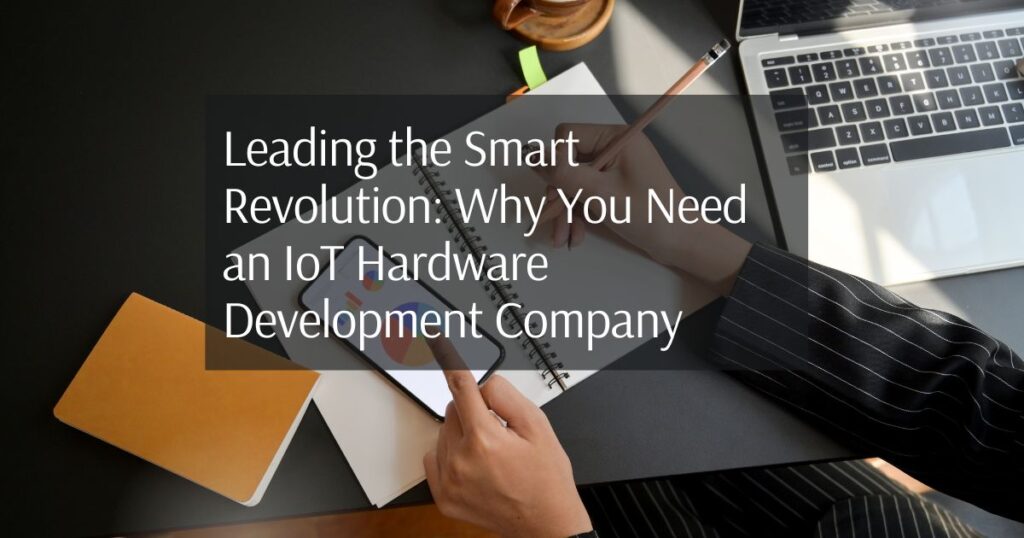We live in a world where devices speak to each other, collect data, and automate tasks—welcome to the Internet of Things (IoT). At the heart of this smart revolution lies the unsung hero: IoT hardware. While apps and software often steal the spotlight, none of this connectivity magic happens without physical devices doing the legwork. And if you’re building something big in this space, you need more than just a great idea—you need a top-notch IoT hardware development company behind you.
What Is IoT Hardware?
IoT hardware is the backbone of every connected device. Think sensors, microcontrollers, embedded systems, gateways, and communication modules. Whether it’s a smart thermostat, a connected car system, or a wearable fitness tracker, it all starts with precision hardware design.
Why IoT Hardware Is Crucial for Smart Solutions
The reliability of any IoT solution boils down to the hardware’s performance. If the sensors misread data or the boards overheat, your fancy AI software can’t save it. That’s why partnering with an expert IoT hardware design company makes all the difference.
What Does an IoT Hardware Development Company Do?
A specialized company doesn’t just build hardware; they bring your idea to life from concept to production:
-
Product requirement analysis
-
Component selection
-
Circuit and PCB design
-
Firmware integration
-
Prototype development
-
Compliance testing
-
Production-ready manufacturing
Benefits of Hiring an IoT Hardware Development Company
1. Access to Specialized Talent
They employ electrical engineers, embedded system designers, and firmware developers—all under one roof.
2. Cost Efficiency
Instead of building an in-house team, outsourcing to experts saves time and money in the long run.
3. Faster Time to Market
With pre-built modules, proven workflows, and deep experience, they cut development time significantly.
4. Scalability and Reliability
From single prototypes to mass production—they ensure consistent quality.
Key Components Designed by an IoT Hardware Company
Microcontrollers and Processors
These act as the brain of the device, handling instructions and interfacing with other components.
Sensors and Actuators
The eyes and ears of the device—collecting data from the real world.
Power Management Systems
Efficient power use is crucial, especially in portable or remote devices.
Connectivity Modules
Whether it’s Wi-Fi, ZigBee, LoRa, Bluetooth, or cellular—communication is key in IoT.
Printed Circuit Boards (PCBs)
All components are connected on these custom-designed boards, optimized for function and form.
Steps in the IoT Hardware Development Lifecycle
1. Discovery Phase
Understanding what the client needs, technical requirements, and defining the product roadmap is very important for IoT Hardware Development Company.
2. Design and Simulation
Schematic design, PCB layout, and thermal/mechanical simulations.
3. Prototyping
Creating and testing the first working model of the device.
4. Testing and Certification
Ensuring compliance with regulatory standards like FCC, CE, or UL.
5. Manufacturing and Assembly
From small batches to high-volume production with automated processes.
Challenges in IoT Hardware Development
-
Power efficiency: Balancing performance and battery life.
-
Connectivity reliability: Maintaining strong signal strength in all conditions.
-
Size constraints: Making compact devices that don’t overheat.
-
Environmental resistance: Water, dust, shock—real-world devices face real-world problems.
How to Choose the Right IoT Hardware Design Company
1. Portfolio and Case Studies
Look at what they’ve built. Have they worked in your industry?
2. In-House Capabilities
Do they handle PCB design, firmware, and testing internally?
3. Manufacturing Partnerships
Can they help scale production?
4. Certification Support
They should assist with legal compliance and international standards.
5. Post-Launch Support
What happens after the product ships? Do they help with updates and maintenance?
Top Industries That Rely on IoT Hardware Companies
-
Healthcare – Smart insulin pumps, remote monitors
-
Automotive – Telematics, vehicle tracking
-
Agriculture – Smart irrigation, crop monitoring
-
Retail – Inventory trackers, smart shelves
-
Industrial Automation – Predictive maintenance, asset tracking
-
Smart Homes – Thermostats, locks, lights
Emerging Trends in IoT Hardware Design
AI on the Edge
Integrating AI directly on devices for faster processing without cloud dependency.
Battery-Free Devices
Harvesting energy from the environment—light, vibration, or heat.
Miniaturization
Smaller devices with more power and capability.
Secure-by-Design Architecture
Built-in hardware encryption for data protection from the ground up.
Custom vs. Off-the-Shelf Hardware
Custom Hardware:
-
Designed for your exact use case
-
More expensive initially
-
Greater performance and brand value
Off-the-Shelf Hardware:
-
Quick to deploy
-
Cheaper
-
Limited flexibility
If your product is niche, custom is usually the way to go.
Cost of Developing IoT Hardware
Costs vary widely depending on complexity, certifications, and production scale. Rough estimate:
-
Simple Device: $10K–$50K
-
Mid-Level Device: $50K–$150K
-
Advanced Product: $150K+
Budget for both development and manufacturing.
How an IoT Hardware Development Company Turns Ideas into Reality
Let’s say you’ve got a brilliant idea for a smart bicycle lock.
Here’s what the company does:
-
Maps out features like GPS, Bluetooth unlocking, and tamper sensors
-
Selects modules and power sources
-
Designs a compact PCB that fits the bike frame
-
Integrates firmware for real-time alerts
-
Creates a rugged prototype
-
Tests it for dust, water, and impact
-
Produces a scalable manufacturing plan
Boom—you’ve got a market-ready product.
Conclusion
In today’s hyper-connected world, the success of any IoT product starts with rock-solid hardware. Whether you’re a startup with a game-changing idea or an enterprise expanding into connected devices, partnering with a professional IoT hardware development company is your smartest move. From design to deployment, they turn visions into reality—one circuit at a time.
FAQs
1. What is the role of an IoT hardware development company?
They design, prototype, test, and manufacture the physical components of IoT devices, including PCBs, sensors, and communication modules.
2. How do I choose between a custom and an off-the-shelf IoT hardware solution?
If your product requires unique features or high performance, go custom. For general applications or MVPs, off-the-shelf might suffice.
3. What industries benefit most from IoT hardware development?
Healthcare, automotive, agriculture, smart homes, and industrial automation are top industries leveraging IoT hardware.
4. How long does it take to develop IoT hardware?
Anywhere from 3 to 12 months depending on complexity, certifications, and iteration cycles.
5. Is firmware development included in IoT hardware services?
Yes, most full-service IoT hardware design companies also handle embedded firmware development for seamless hardware-software integration.
- IoT Hardware Development for Smart Tech Growth
- Discover how IoT Hardware Development empowers businesses to lead the smart tech revolution with cutting-edge connected devices and solutions.
- IoT Hardware, IoT Hardware Development, Smart Devices, Internet of Things, IoT Solutions, IoT Development Company, Smart Technology, Connected Devices
Related posts:
 Why KBH Games Is Perfect for Family-Friendly Online Entertainment
Why KBH Games Is Perfect for Family-Friendly Online Entertainment
 Build a Seamless School Portal with These Powerful Templates
Build a Seamless School Portal with These Powerful Templates
 7 Ways Aerospace Companies Are Using Composites to Elevate Aerial Robotics
7 Ways Aerospace Companies Are Using Composites to Elevate Aerial Robotics
 Samsung Galaxy S24 Ultra Price in Pakistan: A Closer Look at the Mid-Range Marvel
Samsung Galaxy S24 Ultra Price in Pakistan: A Closer Look at the Mid-Range Marvel
 The Ultimate Web Development Checklist for Building High-Performance Digital Experiences
The Ultimate Web Development Checklist for Building High-Performance Digital Experiences
 2025’s Best Tablets in Pakistan for Performance and cheap Price
2025’s Best Tablets in Pakistan for Performance and cheap Price
 10 Local SEO Tips to Boost Your Electronics Repair Shop Online
10 Local SEO Tips to Boost Your Electronics Repair Shop Online
 Optimizing Healthcare Operations in Qatar Through Dynamics 365 Finance and Operations
Optimizing Healthcare Operations in Qatar Through Dynamics 365 Finance and Operations







